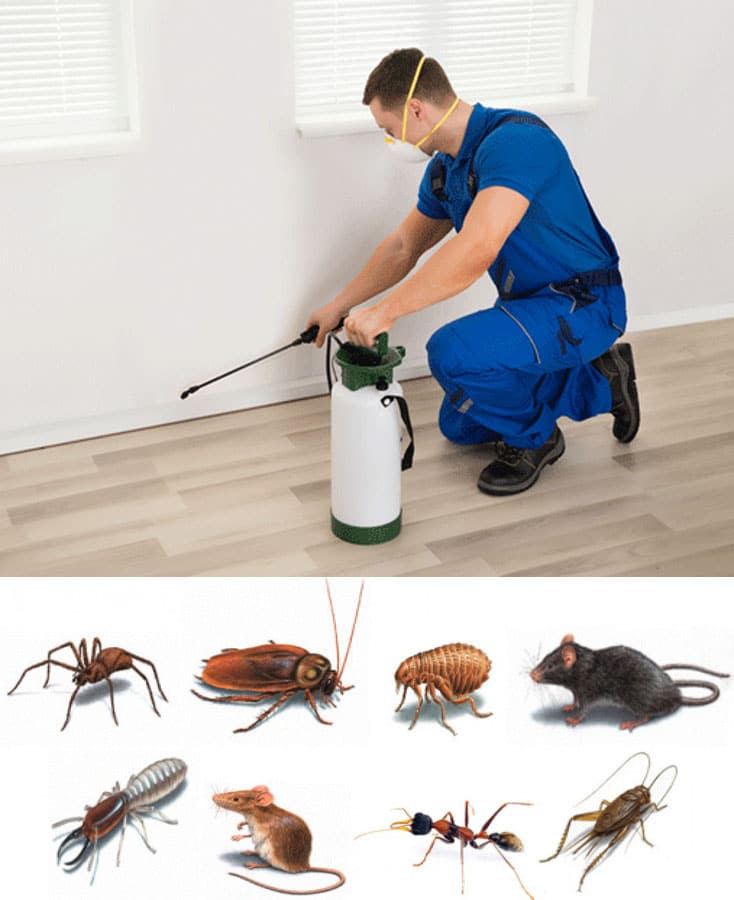A1 Bed Bug Exterminator Charlotte - Efficient and Economical Services
A1 Bed Bug Exterminator Charlotte - Efficient and Economical Services
Blog Article
Bed Bug Therapy Breakdown: Comparing Chemical Vs. Non-Chemical Solutions
In the world of pest control, specifically when managing the consistent issue of bed pests, the choice in between chemical and non-chemical therapy solutions can be an essential one. Both approaches provide distinctive benefits and drawbacks, influencing aspects such as performance, security factors to consider, and overall expense. By checking out the nuanced details of each technique, a more clear understanding of which course to seek in resolving a bed insect infestation can be attained.
Effectiveness of Chemical Therapies
Chemical treatments for bed bug infestations have been extensively recognized for their fast and powerful effectiveness in eradicating these pests. When considering the performance of chemical therapies, it is important to understand that they can provide a fast and complete remedy to a bed insect issue.
Moreover, chemical therapies have the advantage of offering residual effects, implying that they can remain to eliminate bed pests also after the preliminary application. This residual activity is particularly useful in combating any possible re-infestations. Furthermore, the rapid activity of chemical treatments can bring alleviation to people facing extreme bed bug problems, allowing them to regain control of their home swiftly.
Security Concerns With Chemical Solutions
One vital aspect that requires cautious factor to consider when utilizing chemical remedies for bed bug treatment is making sure the security of owners and the atmosphere. Exposure to specific chemicals utilized in bed insect therapies can lead to breathing problems, skin irritation, or various other unfavorable reactions, particularly in individuals with pre-existing conditions or sensitivities.
Additionally, the ecological impact of chemical options is an additional considerable factor to consider. Some chemicals used in bed insect treatments might be harmful to beneficial pests, wildlife, and communities if they leach into the dirt or water systems. It is vital to use chemical therapies judiciously, adhering to safety and security standards, and thinking about less harmful alternatives to mitigate these threats and make certain the efficient and safe monitoring of bed bug invasions.
Benefits of Non-Chemical Strategies
Taking into consideration the possible safety worries and ecological effect connected with chemical solutions for bed bug treatment, checking out non-chemical strategies offers an encouraging option with a number of distinctive advantages. Non-chemical treatments are environmentally friendly, as they do not contribute to air or water contamination, making them a sustainable option for pest control.
In addition, non-chemical options can be efficient in targeting bed bugs, consisting of hard-to-reach locations where chemical treatments might not pass through - A1 pest control services charlotte. Approaches such as warm therapy, vacuuming, vapor cleaning, and mattress coverings give thorough obliteration without the usage of hazardous chemicals.
Limitations of Non-Chemical Treatments

Additionally, non-chemical treatments frequently require multiple applications to navigate to this site accomplish effective removal. This can be lengthy and might not always ensure complete elimination of all bed insects and their eggs, specifically in covert or hard-to-reach places.
In addition, the success of non-chemical therapies greatly relies on proper implementation and thoroughness, which can be challenging for individuals without expert experience. Inadequate application of non-chemical methods may result in incomplete eradication, resulting in persistent infestations and the need for additional therapies.
Therefore, while non-chemical treatments have their benefits, it is necessary to recognize these constraints and consider them when figuring out one of the most reliable strategy for taking care of bed pest problems.
Expense Comparison: Chemical Vs. Non-Chemical Options
Provided the limitations related to non-chemical therapies, an important element to assess in the context of bed insect management is the expense comparison in between chemical and non-chemical alternatives. Chemical therapies usually include the application of pesticides by professionals, which can range from $250 to $900 per area, depending upon the seriousness of the infestation and the dimension of the location to be treated. In comparison, non-chemical treatments like warm treatment or steam can be more pricey, with expenses ranging from $1,000 to $6,000 for a whole home. While the first cost of chemical therapies may seem reduced, multiple therapies may be called for to totally remove the problem, potentially increasing the total expense. On the other hand, non-chemical alternatives may supply a much more sustainable and eco-friendly solution, although they can be cost-prohibitive for some individuals. Inevitably, when considering the cost of bed pest therapy options, it is very important to consider the in advance expenses versus the efficiency and long-lasting sustainability of the chosen approach.
Conclusion

Considering the helpful site potential safety issues and environmental influence linked with chemical options for bed insect treatment, exploring non-chemical strategies provides an encouraging option with numerous distinct benefits.Provided the restrictions associated with non-chemical therapies, an essential element to review in the context of bed insect monitoring is the cost contrast in between chemical and non-chemical alternatives. In comparison, non-chemical therapies like warmth therapy or vapor can be a lot more costly, with expenses varying from $1,000 to $6,000 for an entire home. While the first price of chemical therapies may seem reduced, several therapies may be required to totally remove the invasion, possibly boosting the total expense.In verdict, when contrasting chemical and non-chemical bed insect treatment choices, it is important to take into consideration efficiency, safety, benefits, restrictions, and cost.
Report this page